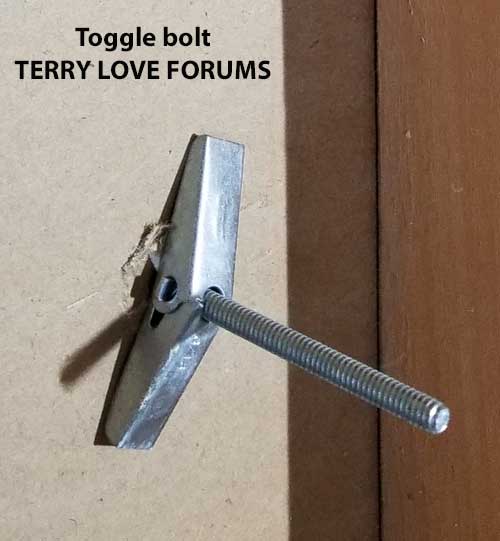Dan W.
New Member
Hi! This is my first post here. I've spent a lot of time at johnbridge for tile work, and I see that site mentioned here often, so I'm sure this is a good resource as well. Here's my issue:
I'm redoing a half bath and need to mount a massive porcelain sink to the wall. The sink was made by Pegasus and is 36" wide by 22" deep. There are two porcelain legs for the sink to rest on, while the back of the sink lowers down onto a metal bracket that is screwed into the wall. The instructions appear to be translated into English from Chinese, so you know how that goes. They recommend that you mount a 2x4 between the studs and screw into that, or even lag screw with toggle bolts through the 2x4. My wall is configured a little differently, as shown in the attached photo. I've got cinderblock with 3/4" furring strips. The area in the photo is now sheetrocked so whatever I do I'll have to cut out a hole. So the question is what is sufficiently strong to hold this sink, which weighs about 75 lbs? Here's what I was considering to do: Nail a 1x4 or 1x5 to the cinderblock with those flat cinderblock nails (I used about two boxes of 'em in the adjoining room). Put the sheetrock back and drill through the sheetrock, 1x5 and through the cinderblock. Tile the wall, leaving a gap for the 4 holes in the metal bracket. Then, I'd mount the bracket with 4 toggle bolts going through tile, sheetrock, wood and cinderblock. It seems to me this would be enough, but is there a better way to do it?
They recommend that you mount a 2x4 between the studs and screw into that, or even lag screw with toggle bolts through the 2x4. My wall is configured a little differently, as shown in the attached photo. I've got cinderblock with 3/4" furring strips. The area in the photo is now sheetrocked so whatever I do I'll have to cut out a hole. So the question is what is sufficiently strong to hold this sink, which weighs about 75 lbs? Here's what I was considering to do: Nail a 1x4 or 1x5 to the cinderblock with those flat cinderblock nails (I used about two boxes of 'em in the adjoining room). Put the sheetrock back and drill through the sheetrock, 1x5 and through the cinderblock. Tile the wall, leaving a gap for the 4 holes in the metal bracket. Then, I'd mount the bracket with 4 toggle bolts going through tile, sheetrock, wood and cinderblock. It seems to me this would be enough, but is there a better way to do it?
A related question: I need to move the sink about a foot to the left of where the existing drain is. The other side of the wall is open to the basement, so I was going to cut the copper pipe and punch a new hole to the left for a new drain in PVC. However, I want to leave the hot and cold lines where they are (long story short, it'll be a real pain to move them). The sink is massive so I don't think you'll really see that the hot/cold lines are not centered around the drain. For reference, in the photo there is a hole in the cinderblock about a foot to the left of the drain, and about a foot higher. I'll be mounting the bracket against the cinderblock above this hole. So the new drain line will be at the same height as the existing one and directly under the bracket.
Thanks for any comments!
I'm redoing a half bath and need to mount a massive porcelain sink to the wall. The sink was made by Pegasus and is 36" wide by 22" deep. There are two porcelain legs for the sink to rest on, while the back of the sink lowers down onto a metal bracket that is screwed into the wall. The instructions appear to be translated into English from Chinese, so you know how that goes.
A related question: I need to move the sink about a foot to the left of where the existing drain is. The other side of the wall is open to the basement, so I was going to cut the copper pipe and punch a new hole to the left for a new drain in PVC. However, I want to leave the hot and cold lines where they are (long story short, it'll be a real pain to move them). The sink is massive so I don't think you'll really see that the hot/cold lines are not centered around the drain. For reference, in the photo there is a hole in the cinderblock about a foot to the left of the drain, and about a foot higher. I'll be mounting the bracket against the cinderblock above this hole. So the new drain line will be at the same height as the existing one and directly under the bracket.
Thanks for any comments!



